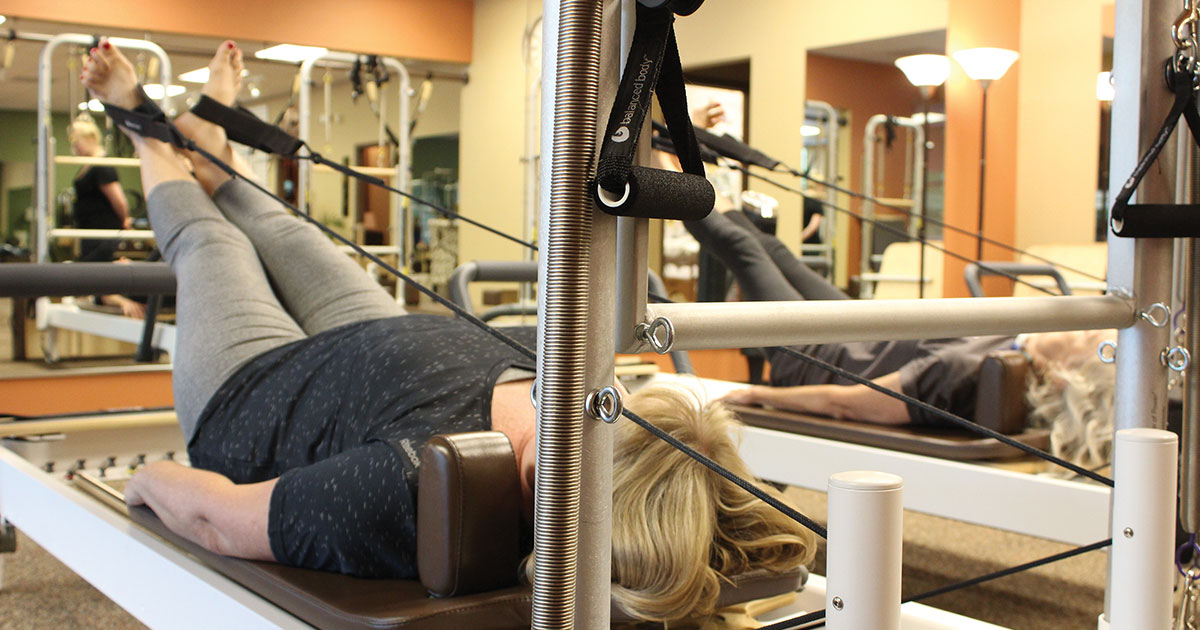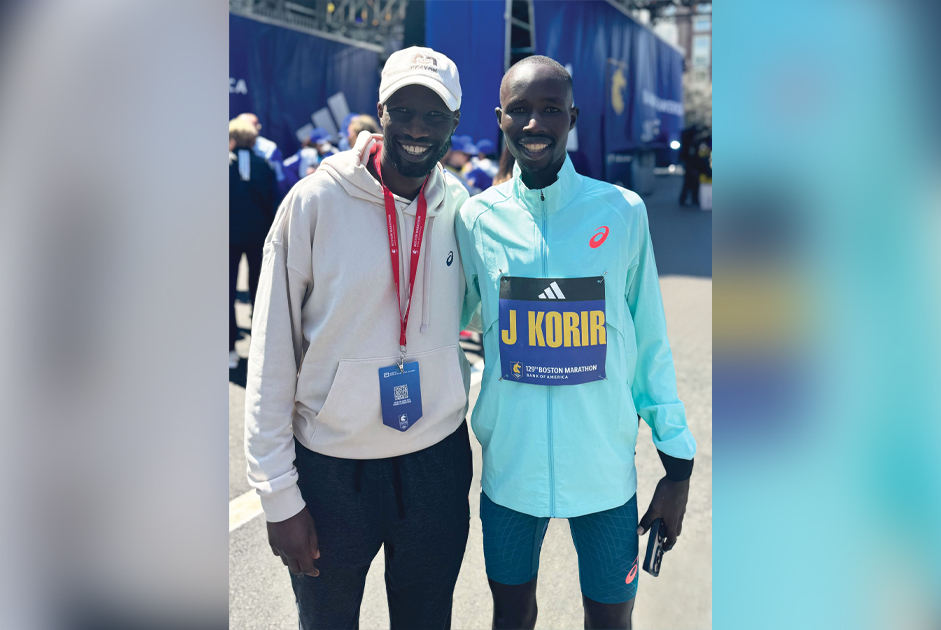BY AMY DIXON
At Inner Strength Pilates (ISP), we work with a wide range of injuries and issues. Osteoporosis is a common condition that we see, so I was moved to write this article to educate my little corner of the world! As a new client, you’ll begin with a series of private sessions, to learn the ropes, and to learn modifications for your issues. At ISP, we offer “Strong Bones” classes specifically for osteoporosis and other spinal issues. These classes focus on building bone density, increasing postural awareness, and lifestyle education.
No matter what your exercise choice, please make sure your fitness professional knows that you have osteoporosis or osteopenia, and they should be able to help you modify your workout!
Fitness professionals should pay close attention to the osteoporosis diagnosis since, according to the National Osteoporosis Foundation, one in every two women and one in every four men over 50 are predicted to have an osteoporosis-related hip, wrist, or spinal fracture. There are many exercises and movements that one needs to avoid with osteoporosis, and working with a qualified professional is helpful to be educated and avoid injury.
What is Osteoporosis?
Under a microscope, healthy bone looks like a honeycomb, but bone tissue affected by osteoporosis becomes more porous, and the holes and spaces in the honeycomb are bigger, thus weakening the scaffolding that makes up the bone. Bone tissue is alive and continuously changing, storing minerals, and forming blood cells. Your skeleton is rebuilding throughout early adulthood, reaching a peak bone mass in your late 20s/early 30s. There are two types of cells busy in our bones, those that build bone, and those that break down old bone. In a healthy skeleton, these cell types work in sync. In someone with osteoporosis, the bone builders slow down while the cells that break down keep chugging along. When bone breaks down more rapidly than it is rebuilt, over time, bone mass and density decrease.
Once bone density loss reaches 25%, you’ve got osteoporosis.
Since the signs of osteoporosis are loss of height or a fracture, preventative measures are important.
Clients who have their bone mineral density (BMD) tested receive a T-score, which tells them how their BMD compares with that of a young adult (25-30 years old). A standard deviation (SD) of -1 to -2.5 below this average indicates osteopenia. A deviation of more than -2.5 indicates osteoporosis. For every 1-point SD drop below the mean, the fracture risk doubles.
Ask your healthcare provider for a baseline density test, with recommended follow-ups to monitor your scores. Research shows that most fractures occur due to activities of daily living. Therefore, the lifestyle education is crucial.
Lifting objects from the floor with a rounded back, such as picking up a laundry basket, or loading the dishwasher are examples of daily motions that should be modified. As the disease progresses, simply coughing or sneezing can cause a spinal fracture.
Osteopenia, the precursor to osteoporosis, should also be considered as it is reduced bone mass less than 25%. When clients have a diagnosis of osteopenia, we still use precautions, and here’s why: the thoracic vertebra have the greatest risk of fracture, especially the area between and just below the shoulder blades. The x-ray test used to measure, called the DEXA, measures the lumbar spine. It can’t measure the thoracic vertebrae because the surrounding ribs, scapula, and sternum would skew the results.
The bones in the lumbar spine are larger than those of the thoracic spine, and the ability to distribute force load decreases from the lumbar to the cervical spine. So if someone has osteopenia of the lumbar spine, an exercise specialist should assume that the person may have osteoporosis of the thoracic spine. Plus, until the results of the client’s next bone density test are known, the instructor doesn’t know if bone loss is progressing as they are working with the client. Therefore, all exercise specialists should use the same precautions for clients with osteopenia as for those with osteoporosis.
Some medicines can be harmful to your bones, even as they are benefitting another issue, such as some steroids, chemotherapeutics, SSRIs, and even some antacids. Dietary choices, a sedentary lifestyle, genetics, acidifying foods, smoking, and hormonal changes can all contribute to bone loss.
Weight-bearing and resistance training is crucial for building bone. Many Pilates mat exercises are not suitable for those with osteoporosis. Working on the Pilates equipment that utilizes spring tension as resistance is a great option. Our sessions also focus on coordination and balance, as the risk for fracture with a fall is increased with osteoporosis.
Exercises to avoid:
- Sports that involve contact
- Compressive forces that occur with heavy lifting
- Contortion, including all forward bending, and end of range side-bending or rotation
No matter what your exercise choice, it’s important to modify abdominal work! The traditional ab curl is no longer your friend. This motion places compressive force on the front side of the thoracic vertebra as you lift your head against gravity.
We have had several clients improve their Bone Density scores to the point that their restrictions are lessened, or removed altogether! These clients had a multi-faceted approach, including Pilates, diet and lifestyle changes.
At ISP you will find an effective program so you can still strengthen your core and mobilize your spine within safe parameters. Don’t be discouraged, be educated.
_______________________
“Pilates has been a game changer for me. My flexibility, strength, and posture have improved dramatically in the past several months. Making Pilates a part of my life has increased my overall wellness. I cannot imagine living without it, and I am grateful to the team at Inner Strength Pilates for their excellent attention and encouragement!” ~Butter Birkas
“I was diagnosed with osteopenia 18 years ago, and was on prescription medicine for it until 4 years ago. I started doing Pilates 8 years ago. I now do Pilates twice weekly at Inner Strength Pilates, along with taking a plant-based calcium. Now, lo and behold, my last bone scan showed my bone density had increased! I cannot wait for my next scan this fall!” ~Sara Hollan


















